Over my career as an artist, my work has addressed my curiosity about the emotive and psychological potentials of pictorial space. I have created numerous series, each centered on a different kind of spatial structure and the potentials of that structure to carry meaning. For example, in an early series of highway paintings, perspectival space offered a sense of anticipation and inevitability. In my playground works, layered space suggests the known, the less known, and the unknowable. And my paintings of beach scatterings allowed me to explore the junction of order and randomness.
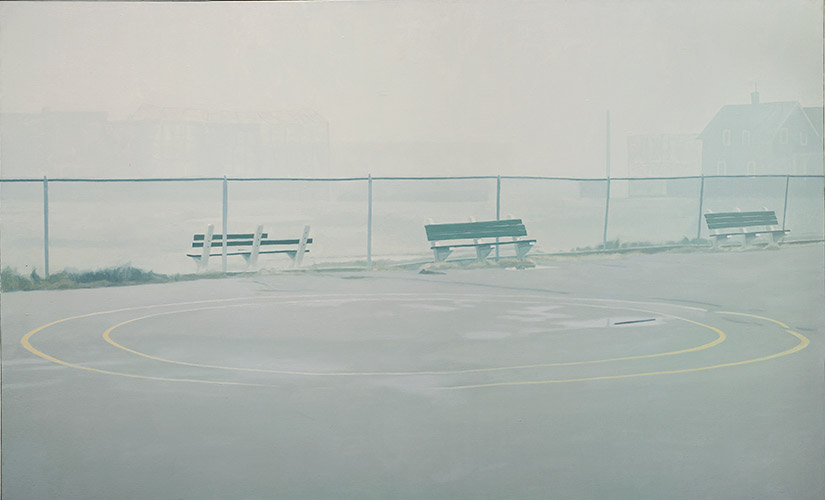
Playground #1, 1973
Oil on canvas, 44” x 72”
Collection of Museum of Fine Arts, Boston
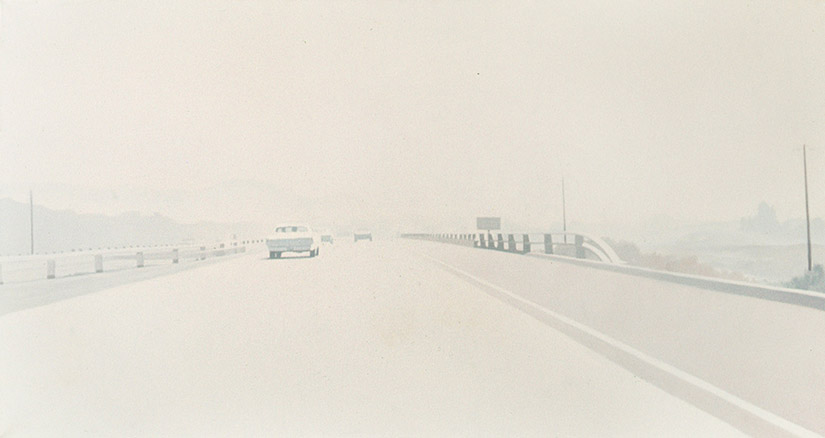
Road Landscape #2,
1971 Oil on canvas, 36” x 68”
Collection Whitney Museum of American Art
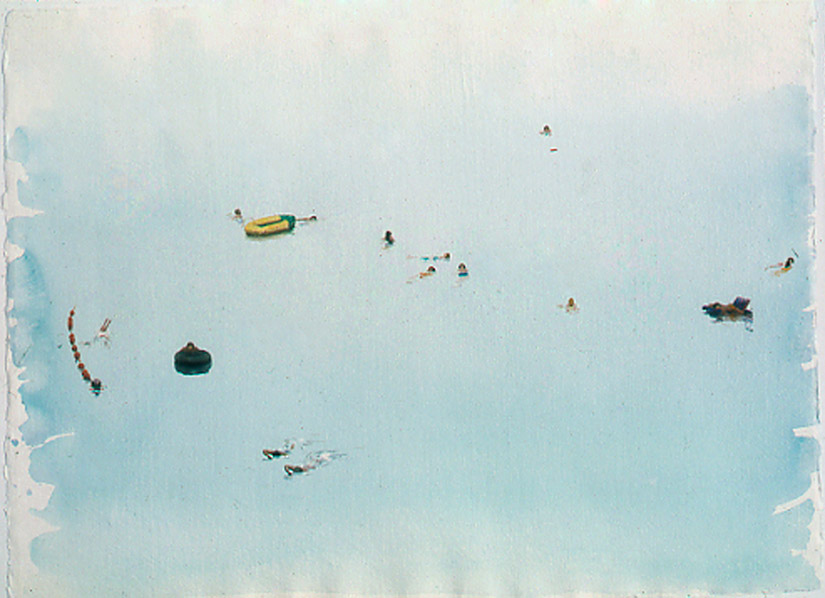
Swimmers and Floats, 1975
Watercolor, 22” x 29 3/4”
In the past decade my interest in visual space has led me to to a fascination with the nature of perception itself and how we unconsciously build a coherent sense of the world from visual fragments, along with memory, feeling, and prior experience.
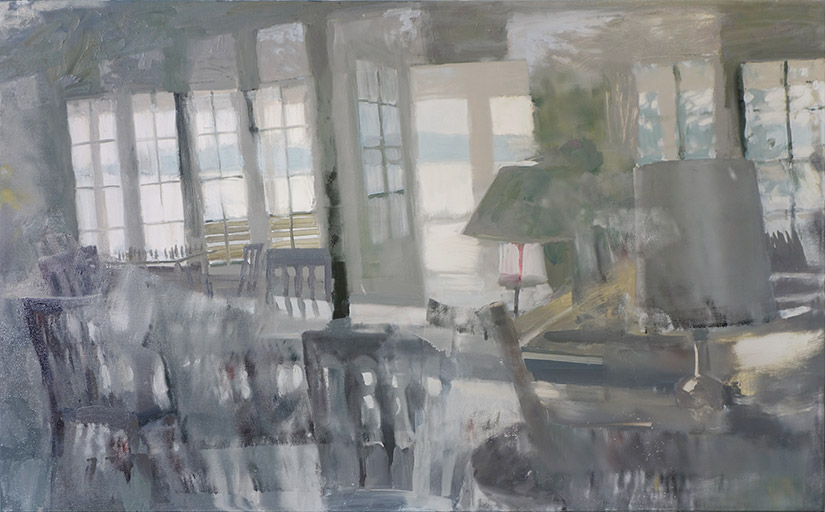
Your Move, 2013
Oil on linen, 36″ x 58″
In 2008, an article grabbed my attention; it articulated in scientific terms what I had already been intuitively exploring. Atul Gawande wrote in his New Yorker essay “The Itch”:
The images in our mind are extraordinarily rich. We can tell if something is liquid or solid, heavy or light, dead or alive. But the information we work from is poor — a distorted, two-dimensional transmission with entire spots missing. So the mind fills in most of the picture. You can get a sense of this from brain-anatomy studies. If visual sensations were primarily received rather than constructed by the brain, you’d expect that most of the fibres going to the brain’s primary visual cortex would come from the retina. Instead, scientists have found that only twenty percent do; eighty percent come downward from regions of the brain governing functions like memory. Richard Gregory, a prominent British neuropsychologist, estimates that visual perception is more than ninety percent memory and less than ten percent sensory nerve signals.
We take in fragments of the world and sew them together into a coherent reality. In my paintings I find ways to convey this very experience which usually we are simply not conscious of. We look, and our focus constantly shifts. Color and light alter as we glance about. Large swaths of a scene may be barely observed while particular details preoccupy us. Perceived forms become reflective of our psychological states. Even our physical stance can modify the character of the situation observed. I seek to make paintings that bring this junction of perceiving, inventing, feeling, and memory into visual play: paintings that explicitly express my own — and the viewer’s own — presence within them.
Protected Trees is my most recent series of paintings, monotypes and watercolors.
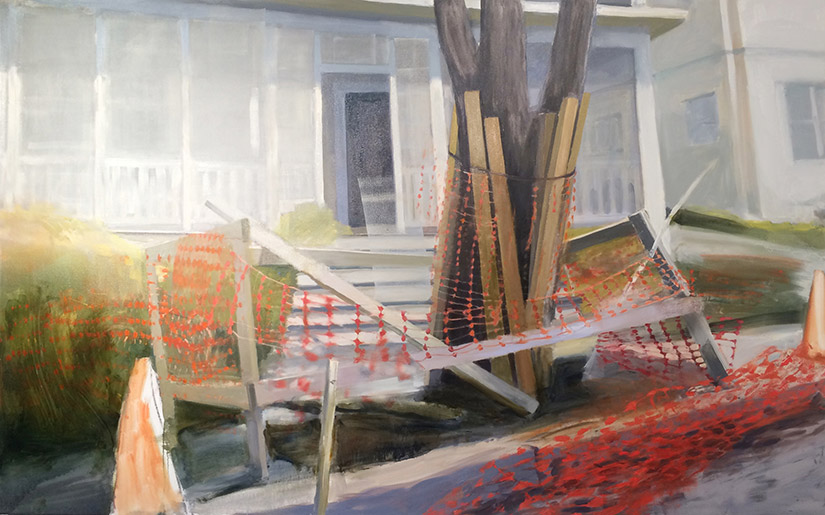
Screened,2016
Oil on linen, 60″ x 96″
For the last three years now, my neighborhood in Cambridge, Massachusetts has undergone extensive roadwork as the city upgrades the sewer system. This work has required much heavy machinery, torn up roads, and considerable protection for the street trees. For two years I paid no attention to the enormous quantity of lumber and vast yardage of orange plastic fencing that surround hundreds of trees. Recently, as these structures have begun to age and sag, I started to actually notice them. I saw both the beauty and the irony of so many trees protected by dead wood and petrol-plastics. I began to paint this strange landscape. This subject matter is revealing itself as an inviting and disturbing metaphor for our flawed relationship to the environment. At the same time, the interaction of geometry and organic form, organization and disintegration, neutral and intense color, have brought me into new territory with my work.
Now in full swing, my Protected Tree series will be exhibited by the City of Cambridge in its Gallery 344 (January through March, 2017).